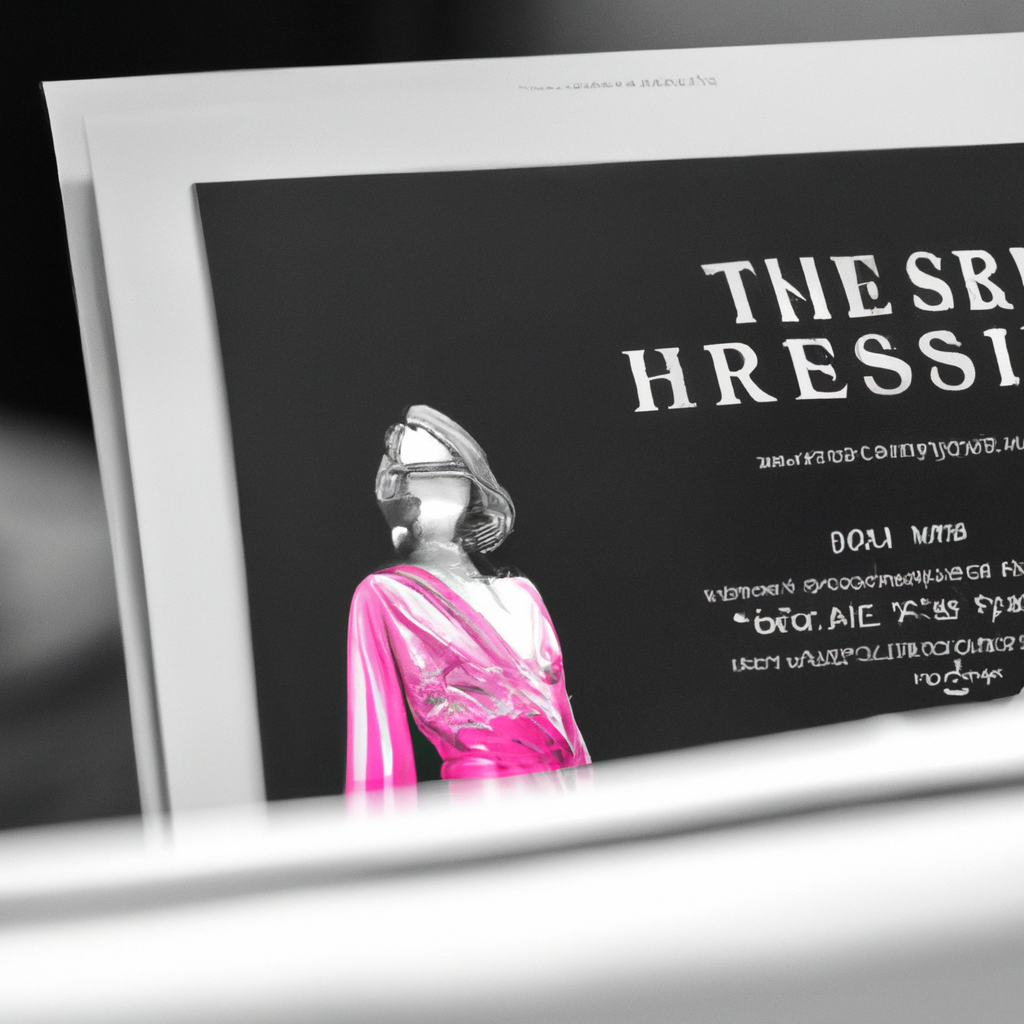What we wear has always been a reflection of our identity. Clothing is a form of personal expression, and thus for centuries each season brought its own fashions. But now, fashion is being preserved in archives and museums around the world, acting as a testament to the history of style. Fashion archives and museums are keeping the legacy of style alive, becoming an essential part of popular culture. Take a look inside these fashion-tastic institutions to learn more about the evolution of fashion over time.
1. Unlocking the Mysteries of the Fashion Archive
Discovering the depths of a fashion archive is like uncovering buried treasure. Once inaccessible to the public, these secret stashes hold some of the most captivating and iconic pieces of fashion history. From ancient costumes to modern-day couture gowns, uncovering these garments is the key to understanding wavering styles, changing tastes, and the ever-evolving industry.
Fashion archives have been catalogued and preserved for many years, being some of the best-kept secrets in the fashion world. Our mission is to ensure these masterpieces in fashion can be shared and explored so that they can play an important part in our fashion past. With each garment showcasing generations of skill and craft, exploring the archives can open a new era of inspiration for designers, fashionistas, and historians alike.
- Ancient Embroidery: Uncover craftsmanship from centuries past, in the form of intricate embroidery and eloquent embellishments.
- Unique Silhouettes: See how silhouettes and proportions have changed over time, and how modern trends have been influenced by the past.
- Concepts in Couture: Explore the ins and outs of vision and visionaries, examining how couture fashion has been a platform for expression and innovation.
2. From Private Collections to Public Displays: A Look at the World’s Great Fashion Museums
The world is home to a copious number of fashion museums, each honoring the artistry and creativity of the fashion world. From the oldest museums to the newly-formed, these institutions are home to some of the most remarkable garments, as well as precious fabrics, accessories and shoes.
Among the great fashion museums, some of the most popular are:
- Musee des Arts Decoratifs in Paris: This museum entered the world’s cultural scene in 1905, and has since become a major temple of fashion. It houses a vast collection of garments, from 1920s day-dresses to gowns from the 1940s.
- Victoria and Albert Museum in London: An eclectic repository of fashion and textiles, this museum stands out for its variety. It offers a great assortment of garments, from casual pieces to sumptuous gowns that reputedly once belonged to royalty.
- Metropolitan Museum of Art in New York: Located in the heart of NYC, the Met is renowned for its cutting-edge exhibitions and comprehensive collections. Covering decades of fashion, its couture offerings date back to the 1800s.
- Devil’s Museum in La Chaux-de-Fonds: This museum provides an insight into the fantastic craftsmanship of Haute Horlogerie. It preserves iconic timepieces, but its insightful collection also includes clothing pieces, from luxury garments of the past to modern athleisure.
Visiting these great fashion museums, you can watch as centuries of fashion evolution come to life in front of your very eyes. From the alluring gowns of the past to the latest menswear trends – the walls of these museums tell an illuminating story of fashion world.
3. Examining the Impact of Fashion Across Cultures and Generations
Fashion is a leading indicator of societal change, influencing both how cultures view themselves and how the world views them. There are distinct trends in dress which culture borrows from one another, adapting popular looks from different areas and changing them to suit their own needs. To explore the power of fashion to shape culture, it’s important to consider the impact of fashion on both generations and across cultures.
Fashion allows generations to pass down stories and show their identity. Through this style of communication, history and heritage can live on. Whether it’s a quilt that Grandma handed down to each generation, or their favorite articles of clothing, fashion allows people to remember stories and carry them with them. It also keeps a record of each era, eventually becoming an exhibit in a museum. Not only that, but trend cycles rise and fall, with some even reappearing decades later.
- Fashion can influence how cultures view themselves and how the world views them.
- Fashion allows generations to pass down stories/culture, whether through quilts or favorite clothing pieces.
- Fashion keeps a record of the different eras in which it appears and cycles as it rises and falls.
4. Preserving the Legacy of the Master Craftsmen Who Crafted Fashion Through the Ages
Throughout history, fashion has been heavily influenced by the master craftsmanship and outstanding vision of those devoted to the design of garments that express compassion, emotion, and style. Influential movements like the Rococo and Art Nouveau inspired the birth of creations that this day are still considered to be timeless. This legacy shall be preserved to remember the debt of gratitude owed to the individuals that have labored to shape the past and present of the fashion industry.
Our current fashion system has been crafted by dedicated individuals and their commitment to excellence in craftsmanship. From the Tailors to the Bespoke Designers, their goal was to create a perfect piece of clothing that blends artistry with function. To best appreciate the significance of the countless master craftspeople of the past, we must understand and exhibit the values they instilled. These timeless values include:
- Process over Profit: Master craftspeople take pride in their work and understood that quality is key to fashion. They wanted to make sure their clients always looked their best no matter the cost.
- No Detail Too Small: Perfection in fashion comes from paying attention to every detail. Whether it is a button, a cuff, or a hem, these tiny elements can make or break a garment.
- Timeless Appeal: The master craftsmen not only focused on creating beautiful garments, but also sought to make garments that transcend time. Some of their designs can be seen in fashion today, a testament to the timelessness of their work.
These values, carried on their shoulders, should be remembered and celebrated. In order to preserve the legacy of these individuals and the contribution they made to the fashion industry, it is important to continue their commitment to excellence and quality.
5. Wardrobe Wisdom: How Fashion Archive information Can Help Into the Future
Making Clothes Last: The fashion archive is a reliable source for avoiding wasteful consumption and extending the life of your wardrobe. Expert tips and tricks for basic garment care, spot repair, tailoring and mending can be found in the fashion archive. Knowing the best methods to clean, store and reconfigure items keeps you from ever having to throw away something due to wear and tear.
Inspirational Basics: Spend time in the archives to update basics and reinvent vintage trends. Get inspired by seeing all of the innovations that have taken place in fashion over the years. Save fabric scraps, create patchwork styles, and combine dated items with modern pieces for an inspired and fashionable look. Utilize your wardrobe in new ways to express yourself and build a timeless wardrobe.
- Carefully analyze garment construction
- Rediscover past or current trends
- Find new uses for pre-loved pieces
- Swap and share knowledge with friends
Using the fashion archive as a resource for wardrobe wisdom will give you the upper hand when it comes to dressing in the future. Knowing the details of fashion history will help you make wise wardrobe decisions and enable you to be both fashionable and thrifty.
6. Keeping the Story of Fashion Alive for Future Generations
It is important to ensure that the story of fashion does not get lost to future generations. From the avant-garde designs of the 20th century to the street style of the 21st century, the ever-evolving fashion world has a fascinating tale to share.
To ensure the story continues, here are a few practical ways to keep the legacy of fashion alive:
- Create digital albums that capture fashion pieces from different eras and the stories behind them.
- Share fashion history with keen learners, be it online or in person.
- Support ethical fashion brands that strive to promote sustainability and craftsmanship.
- Preserve vintage garments by setting up a museum collection or a private archive.
As fashion continues to evolve over time, it is essential to protect its history for the generations to come. By playing an active role in preserving its heritage, we can ensure that the story of fashion lives on.
From Coco Chanel’s iconic suit to Alexander McQueen’s controversial designs, fashion archives and museums are invaluable for preserving the legacy of style. With the shifting and ever-evolving nature of fashion, their importance may be even greater in years to come. Long may their mission to preserve, document and share the history of fashion triumph!





